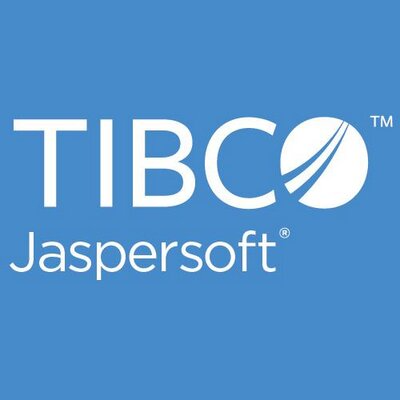Description
Introduction of Power Platform App Maker Associate
This training program is designed to prepare participants for the Microsoft Certified: Power Platform App Maker Associate (PL-100) exam. It provides a comprehensive guide to creating and managing applications using Microsoft Power Platform, focusing on Power Apps, Power Automate, and Power Virtual Agents. Participants will learn how to design, build, and deploy solutions that address business needs and improve workflows.
Prerequisites
- Basic knowledge of Microsoft Power Platform concepts
- Understanding of business processes and requirements
- Familiarity with Microsoft Office applications
- No prior experience with Power Platform development is required, though some experience with Power Apps and Power Automate is beneficial
Table of contents
1: Introduction to Power Platform App Maker Role
- Objective: Understand the role and responsibilities of a Power Platform App Maker.
- Content:
- Overview of the Power Platform and its components
- Key responsibilities and skills of an App Maker
- Understanding the app development lifecycle
- Introduction to the PL-100 exam and certification
- Setting up the development environment
2: Creating Canvas Apps in Power Apps
- Objective: Learn how to design and develop canvas apps in Power Apps.
- Content:
- Overview of canvas apps and their use cases
- Designing app layouts and user interfaces
- Adding and configuring controls and components
- Implementing formulas and logic in canvas apps
- Connecting to data sources and handling data within apps
3: Building Model-Driven Apps in Power Apps
- Objective: Understand the development and management of model-driven apps.
- Content:
- Overview of model-driven apps and their features
- Designing app data models and entities
- Creating forms, views, and dashboards
- Configuring business rules and workflows
- Managing and customizing model-driven app environments
4: Creating and Managing Power Automate Flows
- Objective: Automate workflows using Power Automate and integrate them with Power Apps.
- Content:
- Introduction to Power Automate and its capabilities
- Designing and building automated flows
- Configuring triggers, actions, and conditions
- Integrating flows with Power Apps and other services
- Managing and troubleshooting flows
5: Designing and Implementing Power Virtual Agents Chatbots
- Objective: Develop and deploy chatbots using Power Virtual Agents.
- Content:
- Overview of Power Virtual Agents and its features
- Designing chatbot dialogs and topics
- Integrating chatbots with Power Apps and Power Automate
- Testing and deploying chatbots
- Monitoring and managing chatbot performance
6: Working with Data Sources and Connectors
- Objective: Connect and manage data sources and connectors in Power Apps and Power Automate.
- Content:
- Overview of data sources and connectors
- Connecting to common data sources (SharePoint, SQL, Dynamics 365)(Ref: Microsoft Dynamics 365 Business Central (Technical))
- Creating and using custom connectors
- Managing data access and permissions
- Best practices for data integration and handling
7: Implementing Security and Compliance in Power Platform
- Objective: Ensure security and compliance in Power Platform applications.
- Content:
- Understanding security roles and permissions
- Implementing data protection and compliance measures
- Managing app and flow permissions
- Monitoring and auditing usage and security
- Handling compliance with organizational policies and regulations
8: Optimizing and Maintaining Power Platform Solutions
- Objective: Optimize and maintain Power Platform applications for performance and usability.
- Content:
- Performance optimization techniques for Power Apps and Power Automate
- Managing app lifecycle and updates
- Troubleshooting common issues and errors
- Best practices for app and flow maintenance
- Gathering and acting on user feedback
9: Case Study: Developing a Comprehensive Solution
- Objective: Apply knowledge to develop a complete solution using Power Platform tools.
- Content:
- Defining requirements for a business solution
- Designing and building the solution using Power Apps, Power Automate, and Power Virtual Agents
- Integrating components and testing the solution
- Presenting the solution and discussing implementation strategies
- Reviewing lessons learned and best practices
10: Exam Preparation and Practice
- Objective: Prepare for the PL-100 certification exam with review and practice.
- Content:
- Review of key topics and concepts covered in the training
- Understanding the exam structure and question types
- Practice with sample exam questions and scenarios
- Exam preparation tips and resources
- Addressing final questions and concerns
11: Future Learning and Career Development
- Objective: Explore further learning opportunities and career development in Power Platform.
- Content:
- Advanced certifications and specializations
- Resources for ongoing learning and professional development
- Staying updated with Power Platform updates and features
- Networking and community resources
- Planning for career growth and future projects
This training program is designed to provide participants with the skills and knowledge necessary to pass the PL-100 certification exam and effectively create and manage applications using Microsoft Power Platform. It covers all essential aspects of Power Apps, Power Automate, and Power Virtual Agents, ensuring a comprehensive understanding of the tools and their applications.







Reviews
There are no reviews yet.